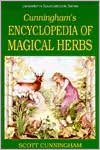Botany for Gardeners
What happens inside a seed after it is planted? How do plants reproduce and grow? What roles do minerals, air, and light play in the life of a plant? Still the most complete, compact, accessible introduction to the world of botany, this third edition includes dazzling electron microscope photos and even more amazing facts about plants. From plant anatomy to basic genetics, this marvelous book explains the science of plants in plain language anyone can understand.
Search in google:
A bestseller since its debut in 1990, this indispensable and handy reference has now been expanded and updated to include an appendix on plant taxonomy and a comprehensive index. Two dozen new photos and illustrations make this new edition even richer with information. Its convenient paperback format makes it easy to carry and access, whether you are in or out of the garden. An essential overview of the science behind plants for beginning and advanced gardeners alike. Minneapolis Star Tribune "An essential reference guide for those interested in how plants grow but who don't have a background in science."
\ The progress of a plant's growth is a summation of its responses to separate, but interacting components of the environment in which it is living. The plant may be favored with adequate water and optimum temperatures but be limited in its ability to photosynthesize by inadequate illumination, perhaps because of shading from taller plants or buildings. Another plant may receive full sunlight, plentiful irrigation, and sufficient fertilizer, but still not express its growth potential because prevailing temperatures are too high or too low. Even if climatic and soil conditions are ideal, stunting may occur because pathogenic fungi or predatory insects have invaded the plant. Microorganisms and animals are, indeed, environmental factors to be reckoned with. Other life forms, being ordained components of habitats occupied by plants, exercise both beneficial and harmful effects, as do temperature, rainfall, and sunlight.\ It becomes obvious that, of a host of interacting environmental factors, only one need challenge a plant's tolerances in order to limit its growth. The greater the number of unfavorable conditions acting in concert, the more profound the effect. That is why, in nature, where so many variables are at work, plants rarely reach their full potential. Happily, in a garden, one has the opportunity to improve on a few factors limiting plant development and, consequently, to cultivate larger, healthier specimens than usually exist in the wild.\ Plants generally die when too many limiting factors overwhelm their physiological capabilities for survival. Or, they may simply succumb to oldage processes, principally to a genetically programmed deterioration of cells and tissues, called senescence (Latin for "to grow old"). Once this process has been initiated, even the best care cannot save a plant. In annual species, senescence takes place within one year of growth; in biennials, in the second year. In perennial species, senescence of a localized nature occurs in older organs before they die and are discarded; it takes many years before the process finally consumes the entire organism.\ When a plant becomes dormant, it prepares for the approach of seasons when combined adverse environmental conditions are bound to limit growth or threaten death. Entry into dormancy entails a reduction of physiological activities to the minimum level needed for survival. At that time the plant may also discard vulnerable parts, such as leaves prone to damage from frost or the effects of drought. Thus, dormant biennial or perennial temperate-zone species are well prepared to face winter's low temperatures, strong winds, cloudy days, and snow cover. Some desert perennials undergo the same dormancy processes to withstand the long, hot, dry months of summer.\ Typically, a dormant plant has well-protected meristems — the sites of renewed growth when environmental conditions improve. Vascular and cork cambia are surrounded by cork tissue, which is not only a superior insulator but, because its cells are impregnated with suberin, also prevents evaporative water loss. Apical meristems, at stem tips and in axillary buds, are encased in layers of bud scales. These are modified leaves, adapted to withstand prolonged periods of cold or dehydration.\ Although annual plants die before the arrival of seasonal temperature extremes or drought, their species survive the worst climatic conditions in the form of dormant seeds, the hardiest structures of higher plants. Among lower plants such as mosses, spores are the units of survival. This type of adaptation is called an avoidance strategy, entailing the passage of a small portion of a plant into the dormant state. The complete organism is genetically programmed to exist only during the most favorable period of the year.\ The most taxing problem arising from an avoidance strategy is the accomplishment of both vegetative growth and reproduction within the relatively short life span of an annual plant. This is especially true in deserts, where the growing season for annual species is only of two to four months' duration. If the desert is blessed with abundant year-end rains, followed by mild temperatures and plentiful sunlight, conditions are favorable for the completion of life cycles, from seed germination to seed production. The early arrival of summer's heat brings an end to the entire crop of annual plants. Of necessity, vegetative growth is minimal. Perhaps four or five leaves, a short stem, and a single tap root are all that late-germinating annuals have time to develop — sufficient to provide physical support for a few miniature blossoms and the food necessary for seed development. Despite their diminutive size, these short-lived plants, understandably called ephemerals, are exquisite gems in the desert flora.\ Only occasionally do the several environmental conditions necessary for the growth of annual species coincide in the desert; but when they do, almost overnight the normally bleak landscape becomes carpeted with multicolored flowers in one of nature's most astonishing displays. In less fortunate circumstances the seeds merely wait in the soil, year after year, perhaps for decades, for the opportunity to fulfill their destinies.\ Environmental extremes of a different and opposite nature dictate small plant size among native species of the arctic tundra and high on mountains in the alpine zone, generally above timberline. Most of these plants are perennials. Their low, compact form provides protection against the crushing weight of snow covers in winter and, after the snows have melted, against the impact of strong winds in their exposed habitats. Another advantage to low growth is that leaves and flowers are positioned close to the ground, in a shallow layer of air warmed when the sun's heat is reflected from the soil. The development of low-growing plants is favored in temperatures a few degrees higher than that of the ambient air, and when pollinating insects fly from flower to flower they enjoy warm havens and plentiful food supplies.\ In their short season of development between dormancies, alpine and arctic tundra plants photosynthesize foods that are stored in roots, ready for use late the following spring when growth is resumed as the last snows melt. Yearly production of flowers and seeds are not as critical events in these perennials as they are in annuals because reproduction can be attempted in subsequent, favorable years when conditions allow completion of the process.\ Many arctic and alpine perennials are evergreen, although minimal photosynthesis occurs during winter. Because their growing season is short, the plants can ill afford the time and expenditure of food reserves needed to make a completely new set of leaves each spring.\ Leaf cells are prevented from freezing by the presence of high sugar concentrations acting as antifreeze in the protoplasm. Dissolved sugars and other cellular substances depress the freezing point of water, as do solutions of specially prepared chemicals sold to protect automobile cooling systems in winter. In some respects, plants have been ahead of human invention by several million years.\ Perennial species in hot, dry deserts face a different set of problems. Some shed their leaves during periods of drought to reduce the loss of water vapor through open stomata. Among evergreen species, the leaves tend to be small, both to expose less heat-absorbing surface to the sun and to reduce stomatal numbers. Other leaf modifications include the presence of extra-thick, water-retaining cuticles and mats of epidermal hairs that slow the evaporation of water and reflect some of the intense light striking the leaf surfaces.\ Plants in any habitat constantly struggle to adjust to the changing environment. But none are tested by so many potentially destructive factors, in radical seasonal shifts from one environmental extreme to another, as are the native species of deserts and alpine-tundra regions. Perhaps it is their ability to survive Earth's harshest climates that makes these hardy species relatively easy to care for in the garden, provided the basic conditions of their native habitats are fulfilled. For warm climate desert perennials such as cacti and succulents, abundant light, infrequent watering, and absence of prolonged periods of freezing temperatures are important. Alpine species may only be grown in temperate zones where cold winters, plentiful rainfall, and long summer days are assured. The special beauty of alpine and desert plants may be enjoyed at exhibits sponsored by alpine plant societies and organizations of cactus and succulent plant enthusiasts.\ It is inevitable that photosynthesizing plants should be the target of destruction by animals because, in the ecosystem, the former are primary food-producers and animals are the principal consumers. Obviously, it is disadvantageous for a plant's well-being, especially its leaves and stems, to be too nutritious and inviting to predators. Some fruits attract animals and provide food as a reward for swallowing and dispersing the seeds, but that is an exception. Injury from any source reduces plant growth and jeopardizes the chance of reproduction — consequences obviously counter-productive to species survival. Thus, species having effective defenses against predatory animals are especially favored by natural selection and, conversely, the most vulnerable run a greater risk of extinction.\ Anyone who has carelessly brushed against a rose bush, cactus, or hawthorn tree, knows how well some plants defend themselves. The protective structures these species bear are classified by botanists into four categories, each an adaptation of a familiar plant part. Thorns are modified short branches grown from axillary buds and terminating in sharp, hard points; among other species, hawthorn (Crataegus spp.) and blackthorn (Prunus spinosa) are so equipped.\ Spines are modified leaves or parts of leaves, such as projections from the margins of blades. For example, some cactus spines are evolutionary remnants of rigid petioles and midribs, well sharpened for protective purposes. In the absence of leaf blades, photosynthesis occurs in cactus stems. Some cacti are covered with masses of spines to absorb and reflect excessive sunlight, as do dense mats of epidermal hairs. And spine tips act as places where dew may condense, drip to the soil, and provide moisture for the plant. On the leaves of some species, holly (Ilex spp.) being an example, major veins terminate in marginal spines at the blade's edge. Other spines may be adapted from accessory leaf parts called stipules, located in pairs at the base of petioles. Because thorns and many spines are modified branches or leaves, they develop at nodes on stems.\ Correctly, a rose stem's protective structures are not thorns but prickles, arranged in irregular patterns within internodes. Prickles are short, woody outgrowths, arising from the epidermal tissue of stems, leaves, and some species of fruit. Many prickles are recurved, having tips pointing downward. Such a shape effectively hinders the progress of small animals trying to climb a stem to reach the leaves. And when present on the long stems of climbing roses and brambles, for example, the recurved prickles become hooked on supports, including other branches of the same plant. This secondary, supportive role played by some prickles also applies to recurved thorns such as those of bougainvillea.\ Matted epidermal hairs on pilose leaves (bearing long hairs; Latin: pilos, "hair") and pubescent leaves (having short hairs; Latin: pubesc, "downy") undoubtedly offer protection against many small herbivorous animals, such as caterpillars, by being difficult to eat. The mouthparts of such animals are adapted to chew on the more substantial tissues of leaves and herbaceous stems. The special epidermal hairs on stems and leaves of Urtica, the stinging nettle, protect in a different manner. When these glandular stinging hairs are touched, the tops break off, penetrate skin, and inject a chemical that causes a painful rash. People and other animals soon learn to avoid such plants.
Preface 9Introduction 11Part I Growth 151 Cells and Seeds: Basics and BeginningsCells 18Cell Walls 20Wall Structure and Cell Growth 21Growth Processes 23Meristems 23Seed Coats 26Food-Storage Structures and the Embryo 27Seed Germination 31Other Germination Requirements 332 Roots and Shoots: How Plants MatureRoot Systems 37Root Growth 39Root Hairs and Branches 40Primary Growth in Stems 41Development of a Woody Twig 47Features of a Woody Twig 48Leaves 50Plants as Food: Human Selection of Edible Plants 57Part II Organization 593 Inside StemsHerbaceous Stems 62Stem Thickening 65Other Features of Wood 70Monocot Stems 734 Inside Roots and LeavesA Root's Primary Tissues 77Secondary Growth in Roots 79Cellular Organization in Leaves 80Plant Cell Types 85Plants as Food: Implications of Global Warming 91Part III Adaptation 935 Adaptations for ProtectionThe Garden Habitat 97Environmental Modification 98Limiting Factors 99Protection in Extreme Environments 102Protection against Animals 106Protection by Camouflage 109Protection by Ants 110Wound Healing 111Chemical Protection 114Mode of Operation of Chemical Protectants 118Other Methods of Defense 1196 Adaptations to Fulfill Basic NeedsCompetition between Plants 120Reaching toward the Sun 121Spreading Stems 122Climbing Structures 124Lianas and Epiphytes 124Supportive Roots 126Special Methods of Water Uptake 126Adaptations for Water Storage 128Underground Food-and Water-Storage Organs 130Saprophytes and Parasites 134Mycorrhizae and Root Nodules 138Insectivorous Plants 140Plants as Food: What is Genetic Engineering? 143Part IV Functions 1457 Control of Growth and DevelopmentGrowth Responses to Light 148Responses to Gravity and Touch 152Other Growth Movements in Plants 155Hormones and the Aging Process 156Control of Branching and Adventitious Root Formation 159Other Hormone Effects: Synthetic Growth Regulators 160Environmental Control: Temperature 161Vernalization 162Environmental Control: Photoperiod 1638 The Uptake and Use of Water, Minerals, and LightOsmosis: The Cell's Water Pump 167Development of Root Pressure 170Transpirational Pull 172Cold Hardening 174Mineral Nutrient Needs 174Soils 179The Photosynthetic Apparatus 181Light Transformed into the Energy in Food 184The Photosynthetic Process 185Gas Exchange with the Atmosphere 188Nature's Hidden Details 190Part V Reproduction 1959 From Flowers to FruitsFlower Parts and their Functions 198Pollination by Animals 203Road Maps and Rewards 204Inflorescences 206Pollination by Wind and Water 210Pollination Alternatives 211The Reproductive Process 213Seedless Fruits and Unusual Embryos 215Fruit Types 216Seed Dispersal 219The Cost of Reproduction 22110 Strategies of InheritanceGenetics: The Science of Heredity 222Mitosis and Meiosis 223The Life Cycle of a Moss 224The Life Cycle of a Fern 226The Two Generations of Flowering Plants 228Chromosome Segregation during Meiosis 231Gene Segregation during Meiosis 232Consequences of Imperfection 235The Origins of Polyploidy 236Custom-Made Plants of the Future 238Epilogue 241About Plant Names 242Glossary 247Suggestions for Further Reading 261Index 263
\ Bloomsbury Review"A combination of crisp, friendly writing and detailed, understandable illustrations (both line drawings and photographs) yields a great book that will be a welcome addition to the reference shelf."\ — Kim Long\ \ \ \ \ Oregonian"Gives the basics in a layperson's language, and it's not the size of a typical scientific tome, which in my book recommends it highly." [This review refers to the second edition]\ — Dulcy Mahar\ \ \ The Oregonian"Gives the basics in a layperson's language, and it's not the size of a typical scientific tome, which in my book recommends it highly. [This review refers to the first edition]"—Dulcy Mahar, Oregonian, November 21, 2002\ — Dulcy Mahar\ \ \ \ \ San Diego Home/Garden Lifestyles"In this magical little volume Capon covers the entire breadth of botanical science in concise, clear terms that anyone can understand and enjoy, but he doesn't make the mistake of talking down to the reader. [This review refers to the first edition]"—San Diego Home/Garden Lifestyles, May 1991\ \ \ \ \ Times Beacon Record“A fascinating book for the curious gardener.”\ \ \ \ \ \ Minneapolis Star Tribune"An essential reference guide for those interested in how plants grow but who don't have a background in science."\ \







